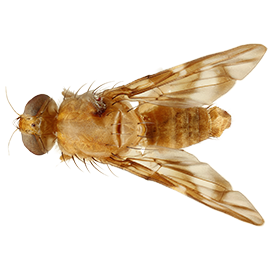Diagnosis
Morphological – adult
This species is in the fraterculus-group.
Features include:
- frons without brown markings except ocellar tubercle
- mesonotum with three pale postsutural vittae
- scutum posteriorly with only single medial brown spot on scuto-scutellar suture (spot usually large and distinct)
- scutellum entirely yellow or with dark markings only on extreme base of disk
- subscutellum entirely yellow to orange, or yellow to red-brown medially, dark brown laterally
- mediotergite yellow to red-brown medially, dark brown laterally
- wing with typical Anastrepha pattern (S-band complete or at most interrupted at crossvein r-m, C-band and at least proximal arm of V-band present), C-band and S-band separated or connected, V-band proximal arm as dark as apical half of S-band, not connected anteriorly to S-band (usually) or connected anteriorly to S-band along vein R4+5 or in cell r2+3, V-band distal arm complete
- abdominal tergites without brown markings
- aculeus length 1.40 – 1.60 mm
- aculeus tip length 0.19 – 0.23 mm
- aculeus tip width: 0.10 – 0.13 mm
- lateral margins of aculeus tip not curved dorsally.
Morphological – larvae
Information not available.
Molecular
DNA barcoding
BOLD reference data available, but cannot be distinguished from A. distincta, A. fraterculus, A. ludens, or A. obliqua
PCR-RFLP Test 1
BsrI: Data not available
HinfI: Data not available
HhaI: Data not available
Sau3AI: Data not available
SnaBI: Data not available
SspI: Data not available
Vspl: Data not available
PCR-RFLP Test 2
There are no fully diagnostic restriction enzymes for A. ludens.
HinfI will distinguish the group A. ludens and A. suspensa, species which cannot be distinguished from each other.
Gallery
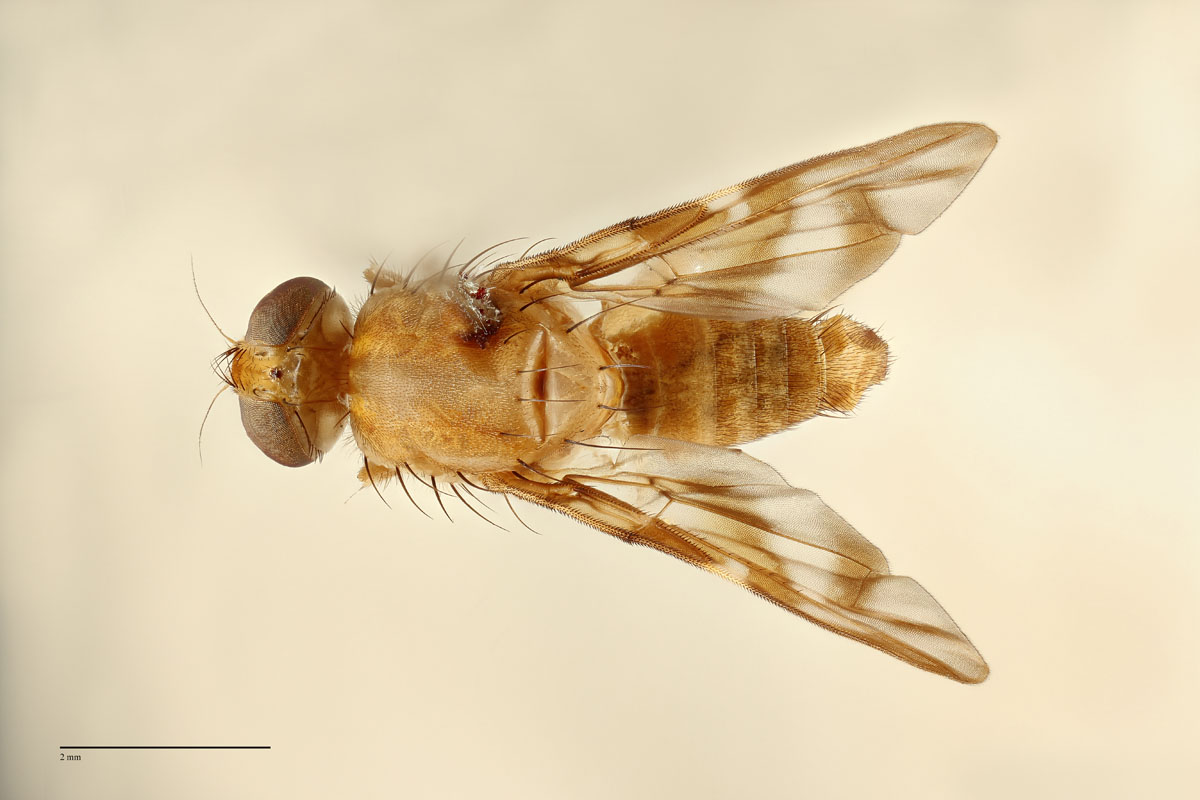 link
linkAnastrepha suspensa - Entire Body Dorsal Classic ASU001
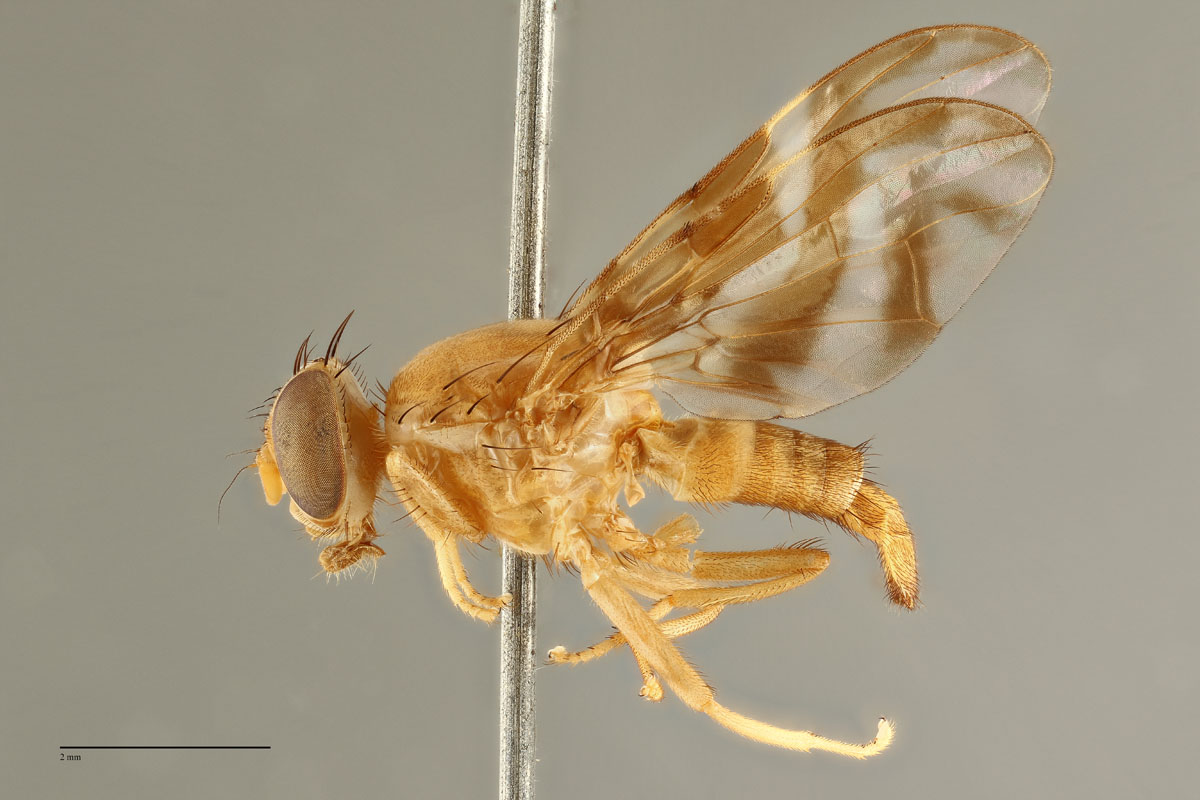 link
linkAnastrepha suspensa - Entire Body Lateral Classic ASU001
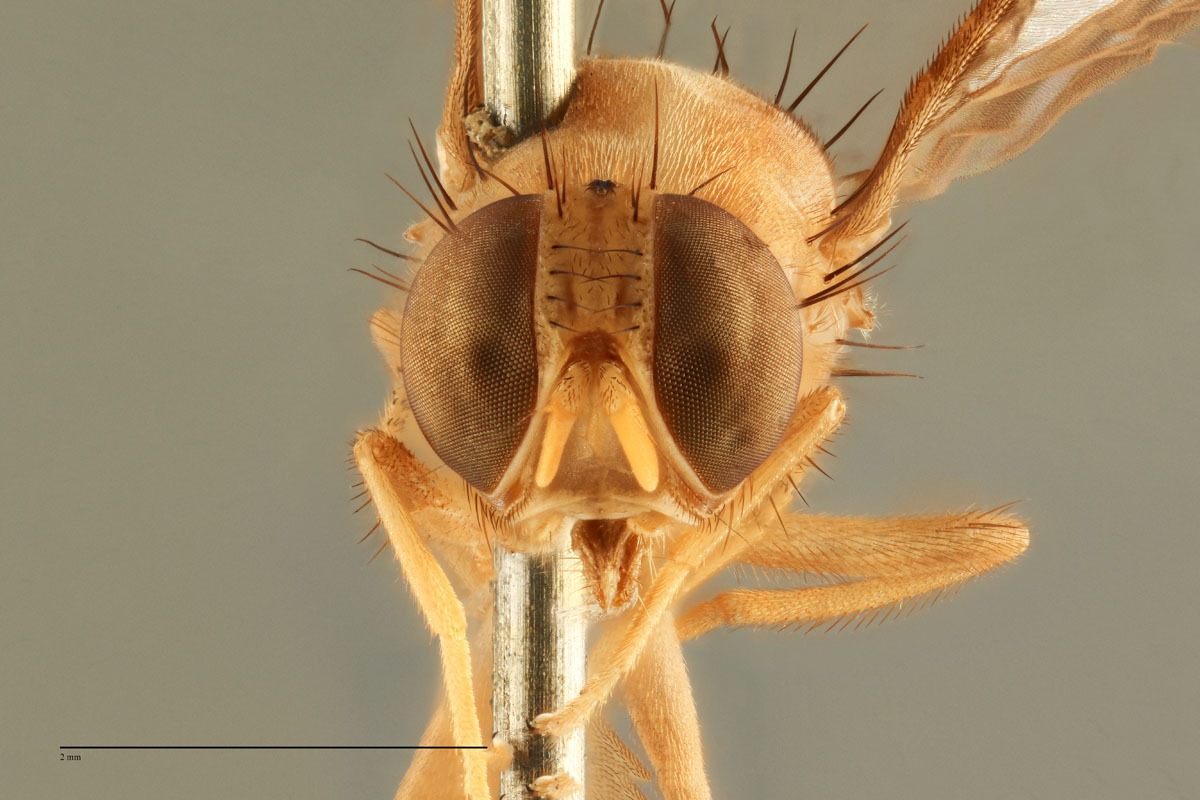 link
linkAnastrepha suspensa - Head Classic ASU001
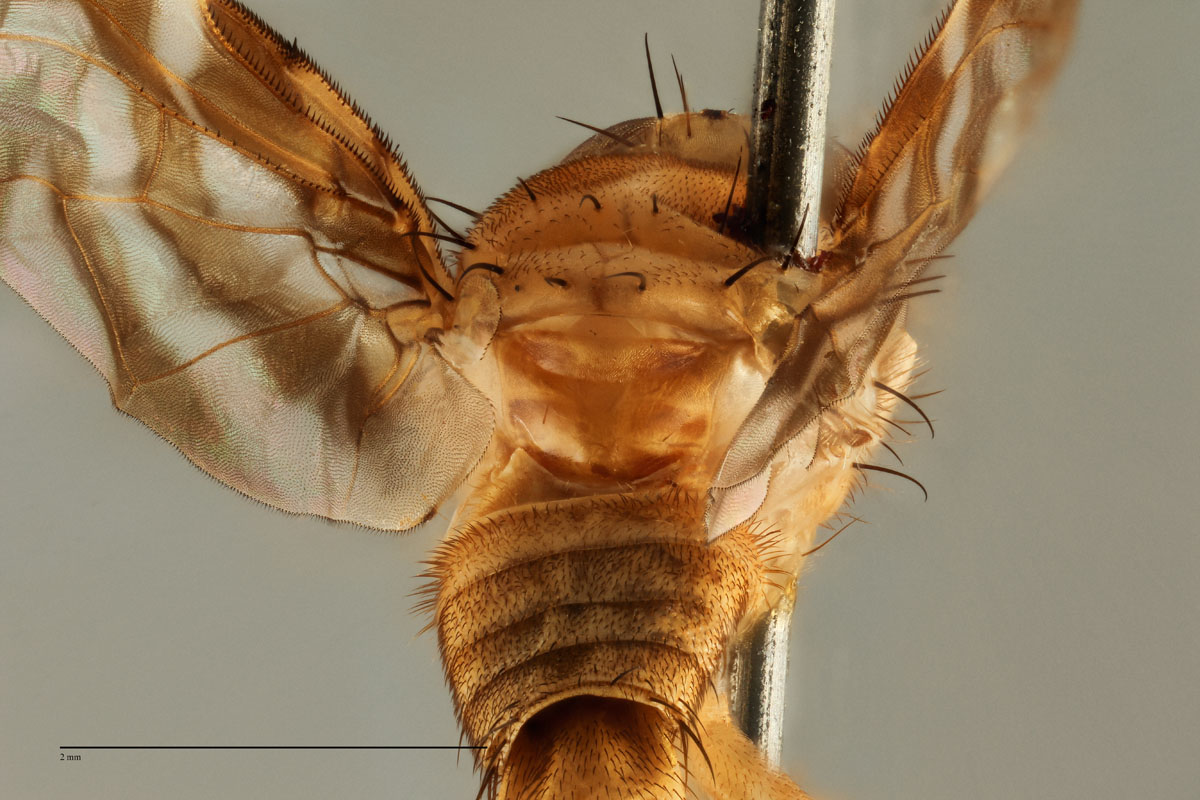 link
linkAnastrepha suspensa - Subscutellum Classic ASU001
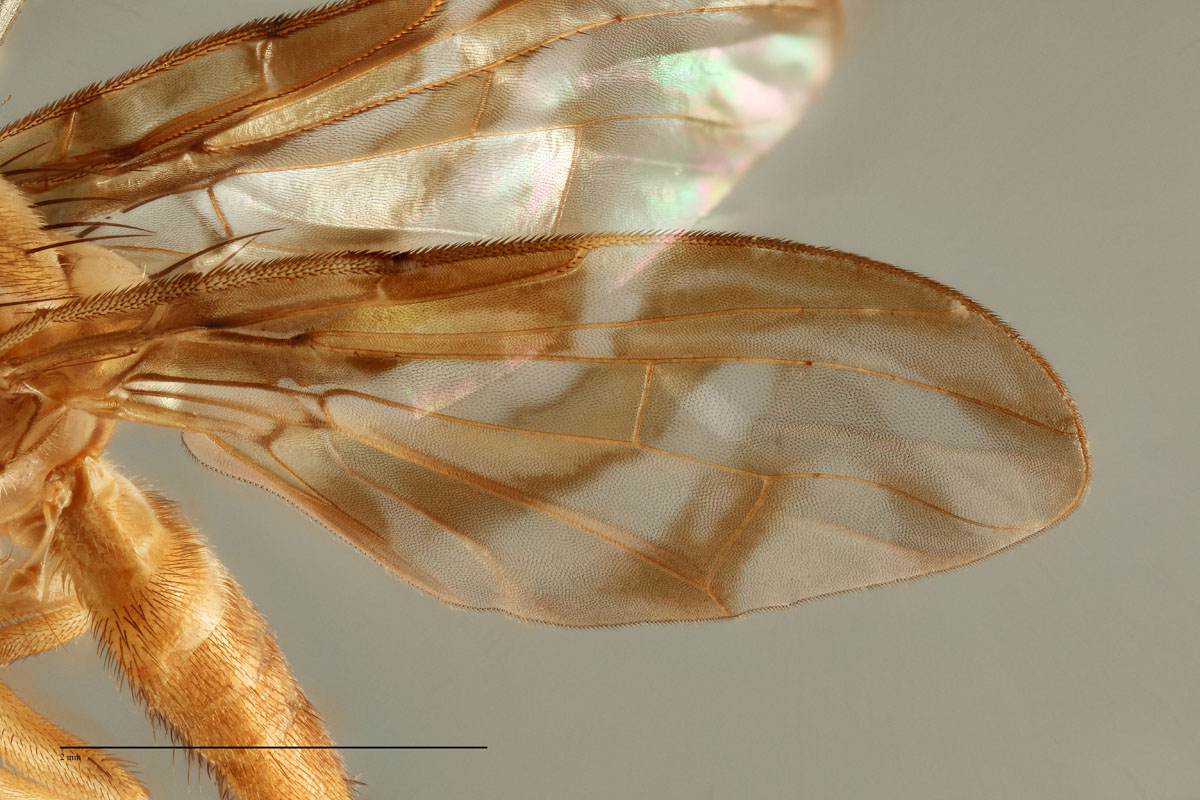 link
linkAnastrepha suspensa - Wing Classic ASU001
Host Range
Anastrepha suspensa has been recorded on hosts from a wide range of families. These include:
- Anacardiaceae
- Annonaceae
- Arecaceae
- Canellaceae
- Caricaceae
- Chrysobalanaceae
- Clusiaceae
- Combretaceae
- Curcurbitaceae
- Ebenaceae
- Lauraceae
- Lythraceae
- Malpighiaceae
- Moraceae
- Myrtaceae
- Oxalidaceae
- Polygonaceae
- Rosaceae
- Rutaceae
- Salicaceae
- Sapindaceae
- Sapotaceae
- Solanaceae.
For a full list of recorded hosts see CABI 2007.
Major commercial hosts:
- Annona reticulata (bullock’s heart)
- Prunus persica (peach)
- Eugenia uniflora (Surinam cherry)
- Psidium guajava (guava)
- Fortunella margarita (oval kumquat)
- Syzygium jambos (rose apple)
- Manilkara zapota (sapodilla)
- Terminalia catappa (Singapore almond)
Distribution
Cuba, Jamaica, Bahamas, Dominican Republic, Haiti, Puerto Rico Puerto Rico, French Guiana (UF and FDACS 2009).
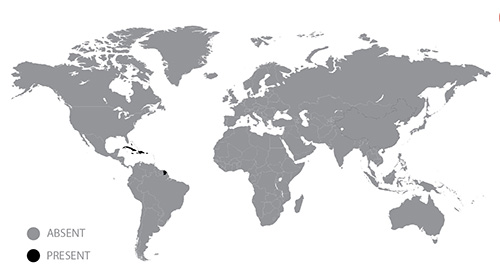
Similar species
Anastrepha suspensa possesses external characters that closely resemble those of A. fraterculus and A. obliqua; therefore, the separation of these three species is sometimes difficult.
One of the most obvious distinguishing marks in A. suspensa is the presence (except in some specimens from Jamaica) of a dark spot at the junction of the scutum and scutellum. This spot is sometimes present in A. fraterculus but is usually smaller, and it is absent in A. obliqua.
The apical part of the S band in A. suspensa is relatively wide compared with that in the other two species, and its inner margin is less concave. It covers the apex of vein M or ends immediately anterior to it, whereas in the other two species it normally ends well anterior to the apex of vein M, or its inner margin is strongly concave.
As in the identification of other species of Anastrepha, the shape of the aculeus tip is important. In A. suspensa, as in A. fraterculus, the serrations occupy no more than three-fifths of the tip, whereas those in A. obliqua occupy at least two-thirds; this character is variable and should be used with care (Foote et al. 1993).
Pest Status
- Exotic
- Major economic importance
Attractant/Lure
No known record, but can be captured in traps emitting ammonia.
